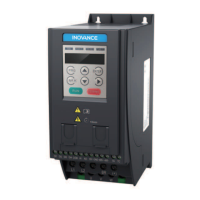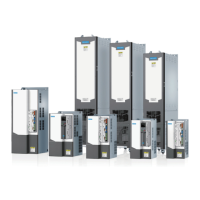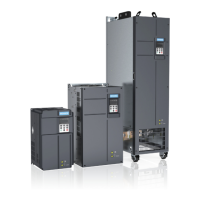Options
‑101‑
K is set to 50% or an approximate value.
Pr indicates the power of the braking resistor.
D indicates the braking frequency (ratio of the regenerative process to the whole
operation process).
The following equations are established based on the preceding two formulas:
K x Pr = Pb x D = U x U/R x D
Pr = (U x U x D)/(R x K)
The braking resistor power can be calculated accordingly.
K is the derating coefficient of the braking resistor. A low value of K prevents the
braking resistor from overheat. K can be increased moderately in case of proper
ventilation, but in no case should K exceed 50%. Failure to comply may result in
braking resistor overheat and fire.
Braking frequency (D) is determined based on actual applications. Typical values of
braking frequency in different applications are listed in "
Table 5–38
"
on page 101
.
Table 5–38 Typical values of braking frequency in different applications
Application
Elevator
Winding and
unwinding
Centrifuge
Occasional
braking load
General
application
Braking
Frequency
20% to
30%
20% to 30% 50% to 60% 5% 10%
Dimension drawings of the braking unit
The following figures show the dimensions of two types of braking units.
Figure 5‑38 Dimensions of MDBUN series braking units (MDBUN‑45‑2T to MDBUN‑90‑2T,
MDBUN‑45‑T to MDBUN‑90‑T, and MDBUN‑45‑5T to MDBUN‑90‑5T) (unit: mm)

